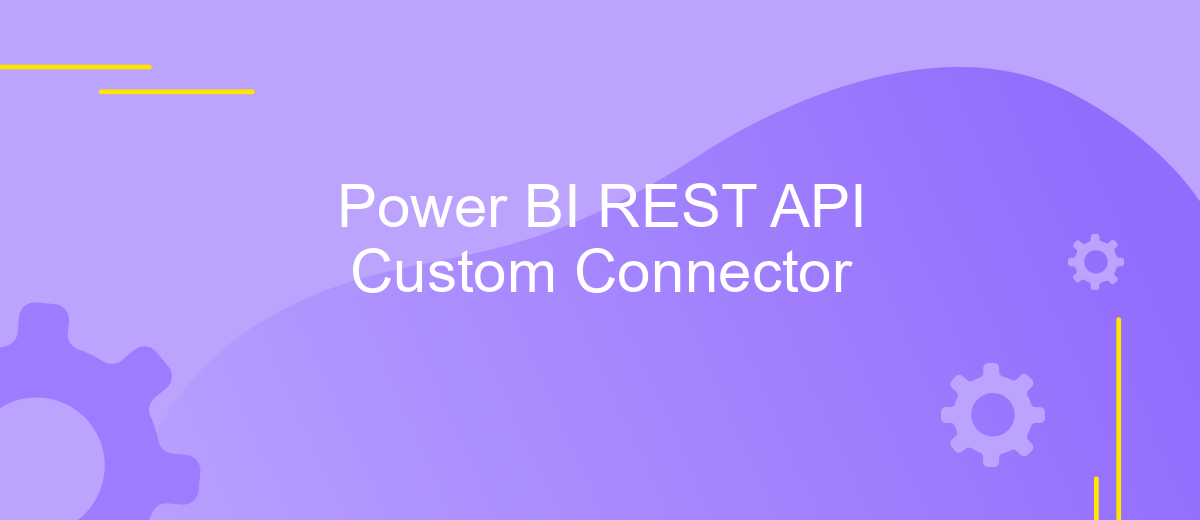Power BI REST API Custom Connector
The Power BI REST API Custom Connector is a powerful tool that enables seamless integration between Power BI and various data sources. By leveraging this custom connector, users can automate data retrieval, enhance data visualization, and streamline reporting processes. This article explores the key features, benefits, and setup process of the Power BI REST API Custom Connector, providing insights into how it can transform your data analytics experience.
What is Power BI REST API Custom Connector?
The Power BI REST API Custom Connector is a specialized tool designed to enhance the capabilities of Power BI by allowing users to connect to REST APIs seamlessly. This connector acts as a bridge, enabling data analysts and business intelligence professionals to access external data sources that are not natively supported within Power BI. By leveraging this custom connector, users can integrate a wide range of data, facilitating more comprehensive data analysis and reporting.
- Enables integration with non-native REST APIs.
- Facilitates real-time data access and updates.
- Supports custom authentication methods for secure connections.
- Enhances data transformation and visualization capabilities.
- Allows for automated data refreshes and scheduling.
By using the Power BI REST API Custom Connector, organizations can break down data silos and gain insights from disparate data sources. This capability is crucial for businesses that rely on diverse data ecosystems, as it allows for a unified view of data, leading to more informed decision-making. As businesses continue to evolve, the ability to connect to various data sources efficiently becomes increasingly important, making the Power BI REST API Custom Connector an invaluable asset.
Architecture of Power BI Custom Connector

The architecture of a Power BI Custom Connector is designed to facilitate seamless integration with external data sources, enabling users to access and visualize data efficiently. At its core, the custom connector acts as a bridge between Power BI and the desired data source, handling authentication, data retrieval, and transformation processes. It leverages the M language to define queries and data shaping operations, ensuring that data is presented in a format suitable for analysis within Power BI. The connector is typically packaged as a .mez file, which includes all necessary logic and dependencies, and is deployed to the Power BI service or desktop application.
To streamline the integration process, services like ApiX-Drive can be employed to automate data synchronization between Power BI and various platforms. ApiX-Drive provides a user-friendly interface for setting up and managing data flows, reducing the complexity associated with manual API interactions. By utilizing such services, organizations can enhance their data connectivity capabilities, ensuring that their Power BI dashboards are always up-to-date with the latest information. This architecture not only optimizes data accessibility but also empowers users to make data-driven decisions with confidence.
Building a Custom Connector

Creating a custom connector for Power BI REST API enables seamless integration and tailored data interactions. To begin, ensure you have a clear understanding of the API endpoints and authentication methods. This foundational knowledge will guide the custom connector development process, ensuring it meets your specific reporting needs.
- Set up your development environment by installing necessary tools like Visual Studio or Power BI Desktop.
- Obtain API credentials by registering your application in the Azure portal. This step is crucial for authenticating requests.
- Create a new custom connector project in your chosen development environment and configure the authentication settings using the obtained credentials.
- Define the connector's capabilities by specifying the API endpoints you wish to access, along with any required parameters.
- Test the custom connector thoroughly to ensure it retrieves data accurately and handles errors gracefully.
Once the custom connector is built and tested, deploy it to your Power BI environment. This deployment allows users to access the tailored data sources effortlessly. Regular updates and maintenance ensure the connector remains functional as the API evolves, providing consistent data access and insights.
Deploying a Custom Connector

Deploying a custom connector for Power BI REST API involves several key steps to ensure seamless integration and functionality. First, it is essential to thoroughly test the connector within your development environment. This ensures that all endpoints are functioning correctly and that the data is being retrieved and processed as expected. Once testing is complete, you can proceed to the deployment phase.
The deployment process typically begins with packaging your custom connector. This involves compiling all necessary files and resources into a single package that can be easily distributed and installed. It's crucial to ensure that your package includes all dependencies and is compatible with the target environment where it will be deployed.
- Prepare the custom connector package for deployment.
- Ensure all dependencies are included and compatible.
- Test the package in a staging environment.
- Deploy the package to the production environment.
After deployment, monitor the custom connector's performance and functionality in the production environment. This ensures that any issues are quickly identified and resolved. Regular updates and maintenance are also necessary to keep the connector aligned with any changes in the Power BI REST API or your data sources.
Using a Custom Connector in Power BI
To seamlessly integrate external data sources into Power BI, using a custom connector is an efficient approach. First, ensure that your custom connector is correctly installed in Power BI Desktop. Navigate to the "Get Data" section, where you can find your custom connector listed among the available data source options. Select it, and you will be prompted to authenticate and configure your connection settings. This process allows Power BI to establish a secure link to your data source, enabling you to pull in the necessary data for analysis and visualization.
For those looking to simplify the integration process, services like ApiX-Drive can be invaluable. ApiX-Drive facilitates the connection between various platforms and Power BI, reducing the complexity involved in setting up custom connectors. By leveraging such services, users can automate data transfers, ensuring that their Power BI dashboards are always up-to-date with the latest information. This not only saves time but also enhances data accuracy and reliability, making it easier to derive actionable insights from your data analytics efforts.
FAQ
What is Power BI REST API Custom Connector?
How do I authenticate a Power BI REST API Custom Connector?
Can I automate data integration with Power BI REST API Custom Connector?
What are the limitations of using a Power BI REST API Custom Connector?
How can I handle pagination in a Power BI REST API Custom Connector?
Time is the most valuable resource for business today. Almost half of it is wasted on routine tasks. Your employees are constantly forced to perform monotonous tasks that are difficult to classify as important and specialized. You can leave everything as it is by hiring additional employees, or you can automate most of the business processes using the ApiX-Drive online connector to get rid of unnecessary time and money expenses once and for all. The choice is yours!

